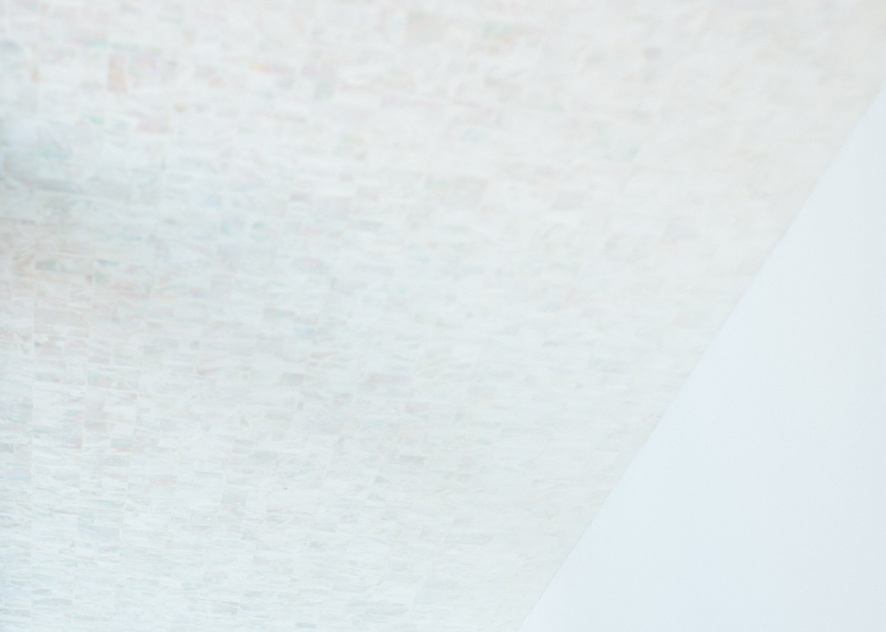まちにある家という彫刻
「彫刻家の家」にて行っている「まちにある家という彫刻」は、香川県高松市にある築50年ほどの家を改装し、彫刻に見立て、町の空気(空間)の移り変わりを展覧会や作品としてアーカイブしていくプロジェクトです。
The Sculpture of a House in a Town at The Sculptor’s House is a project of renovating a 50-year-old house in the city of Takamatsu in Kagawa prefecture to make the house itself a sculpture in which exhibitions and artworks can become an archive of the changes in the atmosphere of the city.
Art work & Art director|保井智貴 Tomotaka YASUI
Photo | 山本康平 Kohei YAMAMOTO
「彫刻家の家」
阿久津裕彦 | 美術解剖学者
人体はグラデーションです。
ある組織学者がそう言った。組織学は肉眼では見えないような人体内部の細かい世界を顕微鏡を通して覗きこむ。極微細な世界では目で見るような境界がなく、すべては緩やかに変化していく。 解剖学のように、普段と同じ視覚世界をとおして人体の内部を見つめれば、そこには無数の境界がある。そ こに引かれる輪郭線によっていくつもの器官が区切られ、呼び名が与えられる。皮膚、脂肪、筋肉、神経、 血管、骨。それらが自分の体の中にあると誰もが信じている。人によってそれらが定義づけられたものであ ることなど、とうに忘れてしまったように。
人は皮膚によって外界と区分けられ、その内部には硬い骨が心棒のようにあってその硬さが形を決定づける。そのように自己を感じ取る時、皮膚と骨は、内と外から私を規定する要素である。
だが、それは本当だろうか。それは真理であろうか。
人は世界を皮膚で触れると共に目で見ることで、視覚的に世界を区切ってきたのだろう。それは世界から自 己を区切り、私という存在を作り出すための最初にして決定的な働きである。その働きこそ自意識である。 自意識はいつも私に強いる。私であれと。そのために世界を用意したのだと。そうであろう。しかし、組織学が暗示するように、実際には世界に境界などない。そして、皮膚の内側がグラデーションであるのと同じ く、私と世界とはグラデーションとして繋がっている。その時、私は世界と区切られることなき連続体とな り、全ては事象として渾然一体とした姿を見せる。それゆえに、我々は感覚器を持って世界を感じ取り、そ こから能動的に世界を創出できたのだ。
彫刻家の家は、本当に家なのか。
その外壁は確かにその物を存在させる皮膚として振る舞うが、来訪者がその内部へ立ち入れば、意味ありげ に隆起した床が、そこが視覚的対象としての外部の連続性であることを主張する。ならば家の内部はどこに あるのか。内部の構造がその柱や梁を含めて目の当たりになるこの家には、内部は存在しない。この家には 外しかなく、我々のように内に埋め込まれているであろう骨がないのだ。解剖学が、皮膚という身体の表面 を取り去ってその内部を探ろうと試みても、結局そこには新たな表面が現れるように、この家もどきは、建 物の内に入ったと思っても結局は外にいるのである。それは建物の外部においても同様で、どこまでも外世 界との関係性のグラデーションを深めていくかのように、周囲の環境と呼応しつつ動的に変化していく。こ の建物は、その在り方において動的平衡の流れにあり、内へ入ることができる我々にとっては、内部なき生 き物である。
せわしなく動く我々とは異なるタイムスパンにある彫刻家の家という生き物に、見えるままの物体ではない アートワークによる異なる周波数が加わるとき、そこに現れるグラデーションに我々はどのような輪郭線を 引いてしまうのだろうか。
Sculptor's House
Hirohiko AKUTSU | Art Anatomist
"The human body is a gradient," said a histologist once. Histology peeks into the intricate world inside the human body, invisible to the naked eye, through a microscope. In the ultrafine world, there are no boundaries visible to the eye; everything changes gradually.
When you gaze into the interior of the human body through the usual visual world, much like in anatomy, you encounter countless boundaries. These delineating contours divide numerous organs and assign them names. Skin, fat, muscles, nerves, blood vessels, bones. Everyone believes these exist within their own bodies, as if long forgotten that they are defined by humans. Humans are delineated from the external world by the skin, within which lie hard bones, akin to a core determining shape and rigidity. When sensing oneself in this manner, the skin and bones constitute elements that define me from both inside and out.
However, is this true? Is it the truth?
Humans perceive the world through touch and sight, visually delineating it. This delineation creates self-awareness, separating oneself from the world, constructing the concept of "me." This function is self-consciousness. Consciousness always imposes itself upon me. Be yourself, it says. That's why the world was prepared for me. Perhaps that's how it is. However, as histology implies, there are no boundaries in the world. And just as the interior of the skin is a gradient, so too is the connection between myself and the world a gradient. At that moment, I become an uninterrupted continuum with the world, and everything presents itself as a seamlessly unified array of phenomena. Therefore, it is precisely because we have sensory organs that we are able to perceive it and actively create the world from there.
Is a sculptor's house truly a home?
While its outer walls act as skin, implying its existence, once inside, the meaningfully elevated floor asserts external continuity visually. Then where is the interior of the house? In this house, where the internal structure, including its pillars and beams, is visible, there is no interior. This house has nothing but exterior; it lacks bones embedded within, like us. Anatomy may attempt to explore the interior by removing the surface of the body, the skin, but ultimately, just as new surfaces emerge, this pseudo-house, even when one enters the building's interior, one ends up outside. Similarly, on the exterior of the building, it continues to deepen the gradient of its relationship with the external world, dynamically evolving in resonance with the surrounding environment. This building exists within the flow of dynamic equilibrium in its being, and for us who can enter, it is a creature without an interior.
When a different frequency of artwork, not as visible objects, is added to the creature that is the sculptor's home, existing in a timespan different from our bustling movement, what contours will we draw in the gradients that appear there?
